How Jim Cummings Ruined Brunch for Everyone
Go behind the scenes of the viral short film "The Last Brunch" with producer Thomas Cross.
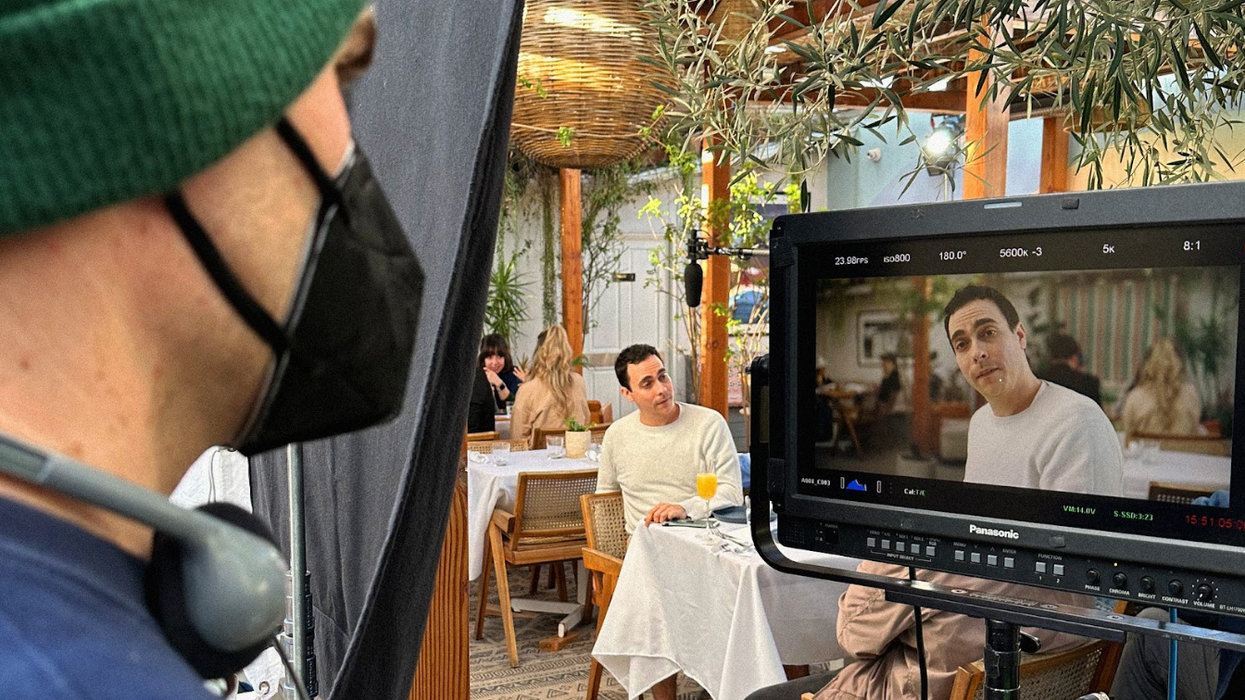
"The Last Brunch" bts
Written by Thomas Cross
It’s October 2022, and I’m hiking Runyon Canyon with Jim. We’ve been doing this a lot recently, and Jim won’t shut up about a short film he’s been wanting to make with our friend and frequent collaborator Dustin. Short of breath, Jim acts it out as we walk uphill:
“It’s my sister’s boyfriend — he keeps sending me pictures where he’s just railin’ her.”
I’ve heard the bit before, but it still makes me laugh. “Yeah, man, that’s going to be insane. When are you making it?”
Jim gets distracted by a dog up ahead and changes the subject. It’s the second or third time he’s pitched the idea to me, but for the first time I ask him, “Why don’t we just crowd fund it?”
“Yeah? You think we should?”
Sometimes it’s that simple. We schedule a time next week during the Short to Feature Lab to shoot the pitch video. Now we’re cooking with gas.

Turn over every stone.
There’s bound to be money under one of them.
We’ve decided to raise money for two shorts, which will help us get the maximum use out of all the gear we have to rent. The total we’re looking to raise ends up just north of $20K—which we’re not sure we can do.
We spend a few days researching which crowdfunding platform makes the most sense. In the past, we’ve used Kickstarter, Indiegogo, and WeFunder, but we aren’t dogmatic about which one’s best for this project. After thoughtful deliberation, we decide that Seed & Spark is the one to go with this time around—mostly because they take the lowest percentage fee, and they focus specifically on film projects. (Seed & Spark people, feel free to Venmo me whenever.)
With the fundraising ball rolling, we move into pre-production.

Fix It in Pre
We start prep and it takes about five minutes before we realize that we’ll need to raise considerably more money than we thought. This is, unequivocally, my mistake.
In our first conversations, I had assured Jim that I’d made a short with about $6,000 before—which was true—it’s calledIll Will, and Dustin also stars in it.
With that in mind, I assure him that with $20K, we’ll be more than comfortable. What slips my mind during the excitement of those first few pre-pre-production meetings is that we are no longer in the Film School of High Fives and Free Lunch.
Early on, we agree that the crew deserves to be paid this time around, so we aren’t going to ask them to help out for free. Don’t get me wrong—there’s certainly a time and a place for that type of bootstraps-filmmaking, but after making three feature films, we agree that it’s time to step into the real world, where attaboys and free pizza don’t pay the rent.

The Location Hunt Begins
Around that same time, we start doing more serious research into locations. What quickly becomes clear is that shooting in Los Angeles puts us at a distinct disadvantage when it comes to booking locations, especially on a tight budget. More specifically, it’s extremely challenging to source a high-end brunch restaurant for cheap.
We tour three or four rooftops in Downtown Hollywood (as it was originally scripted) and each time, when the conversation inevitably gets down to brass tacks, we can’t afford it. Like, we can’t even come close. These are places that have worked with the likes of HBO, Netflix, you name it. They’re used to closing up shop and collecting $100K for a film shoot. Needless to say, that isn’t gonna happen.
I try to reason with them, “See, we’re a much smaller production, and we won’t have nearly the same impact on the business or customers, you’d really be helping us out.”
Yada yada, pretty boy. Save it. No amount of bleeding heart explanation is going to change their bottom line.
We end up winning on our location in the end, paying just under six grand for the day, but it’s the back-and-forth with the other restaurants that’s spinning around my head as I walk into Jim’s garage one morning and state plainly, “We need more money.”
“We’ll get it.” He assures me.
Jim makes some calls and locks in a new group of Executive Producers to make up the difference. Pretty neat trick.
The Cast
Of course, when you tour each potential location, your mind moves to the next logical question, “Who are we going to put in here?”
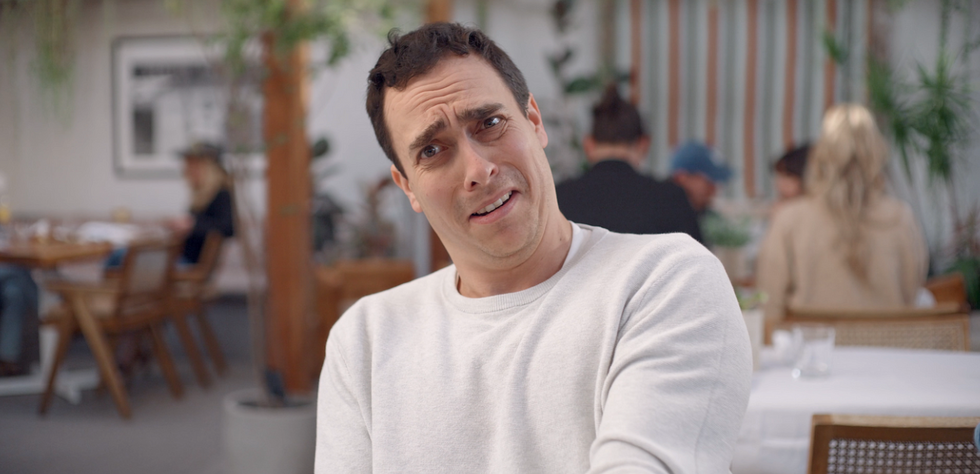
Dustin is the easy answer. He’d written the screenplay with Jim, he’s producing it with me, and he’s funnier than hell. We know we have a Jameson.
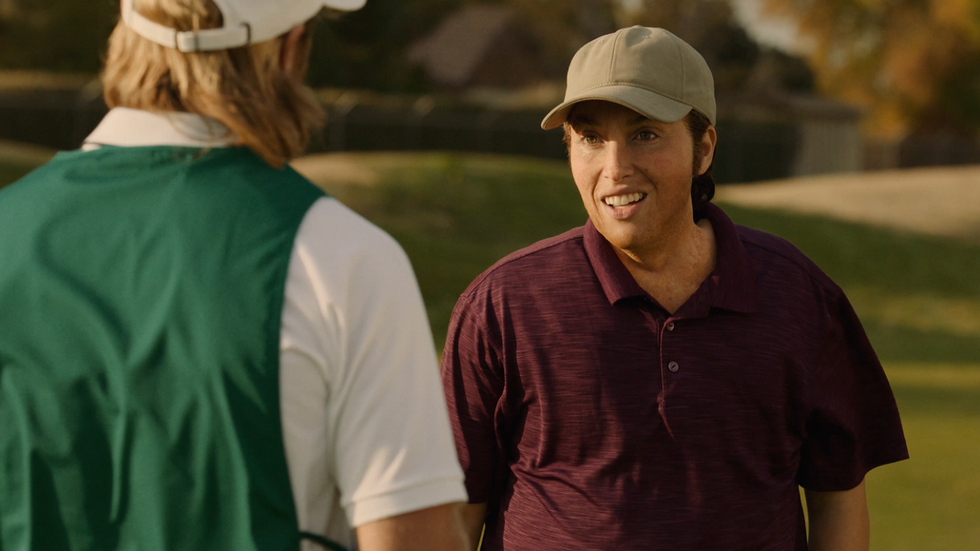
Someone has to sit next to this guy and keep a straight face. As far as we’re concerned, the only person we can count on is Julia Bales (who is, conveniently, Jim’s wife). Nobody’s more qualified to put up with Dustin, and she also happens to be an excellent actress (see: "Golf!"). With her in the mix, that side of the table is set.

Across from them, we need a couple that can go toe-to-toe. Bridge is no stranger to the greater Jim Cummings Universe. He was a standout inThe Beta Test, and I produced his feature film debut (A Fantastic Relationship) earlier in 2022. On top of that, he’s one of our closest friends, so we know he’ll do it.
That only leaves his counterpart—possibly the most important piece of the puzzle—the concerned friend who utters,
“You said your… sister?”
Jim and I go back and forth for a few days, unsure if we know someone that’s right for the role. We consider holding some virtual auditions, which neither of us are very keen on doing. He sits at his desk, scrolling through headshots online. Then, out of the blue, it hits me: “What about Taylor [Misiak]?”
Jim turns from his computer, “Misiak? She’d be perfect.”
So we have a cast. It usually isn’t this easy, and we’re no strangers to an extensive audition process, but this time it’s kismet. Sometimes you get lucky.

Crewing Up
After over 400 days of on-set experience, I can tell you the single most important lesson I’ve learned—it’s all about who you work with.
I’ve come to adopt a longstanding maxim that Jim has preached for years:
“No jerks on set.”
When you’re spending 14-hour-days for months on end with the same people—tired and hungry and sweating and impatient—this one key principle will change your life. Don’t tolerate jerks. Don’t work for them, don’t engage with them, don’t hire them. It just isn’t worth it.
Jim is hot off a feature with Francis Galluppi, and he can’t stop raving about the Director of Photography, Mac Fisken. I schedule a coffee date with Mac and come back to the office with the same take-away: this guy freaking rocks.
I break the news to Mac that this isn’t going to be the project anyone gets rich on, and he (and his team) will have to take a very-reduced rate. He understands and says they’ll make it work. He also has some connections with rental houses in the area, which will come in handy for getting gear at a lower rate than we expected. Hallelujah.
Now we have to think about what we’re going to put in front of the camera. For years, Jim has worked with the same Production Designer, Charlie Textor, and after meeting him it’s obvious why. This guy is an animal. He works extremely hard, never complains (even when he has good reason to!) and he’s the funniest person on set. There isn’t even a question, Charlie’s in.
But it’s not enough for the movie to look great. It has to sound just as good as it looks. We’ve both worked with some excellent production Sound Mixers over the years, but Jim wants to use the mixer from Francis’ movie, Gabe Linkiewicz, who ends up being a gift from God.
It always surprises me how simple crewing up a film tends to be. As a producer, you really only have to hire the department heads and then stand back while they do the rest, which reminds me that producing is mostly just phone calls, emails, smoke and mirrors. Anyone who says otherwise is likely gatekeeping.

The Boring Stuff
With the cast, crew, and location locked in, Dustin and I get started on the logistics of it all.
We book a caterer, organize parking, send out location and talent releases—all the tedious and undramatic stuff that they don’t show in the movies about movies.
We run into a bit of a snag with our permit for the portion of our shoot which will be in a Hollywood Hills neighborhood. The permit office is really strict with shooting in neighborhoods, especially when it’s an overnight shoot. That’s understandable, and probably actually good.
What isn’t good is that they’re oftentimes so understaffed that they don’t get back to you until the night before you’re shooting, which is frankly too late to make any meaningful changes to the schedule. Of course, they usually have a good solution for you: just pay us some more money.
This happened so often that Dustin started doing a bit, “Oh, I just got an email from the permit office, they probably need more money.” A funny joke, but a painful reality. Even so, I strongly recommend working with local permitting offices. They do their best with what they’ve got, and the alternative (i.e. shooting without a permit) leads to a constant anxiety attack on set, which is simply not worth it.
We have a couple other semi-dramatic moments with SAG and some other vendors in the days leading up to shooting, but nothing we can’t handle. The tightrope walk of pre-pro is inevitable, and gets easier each time you do it. We’re ready to roll.
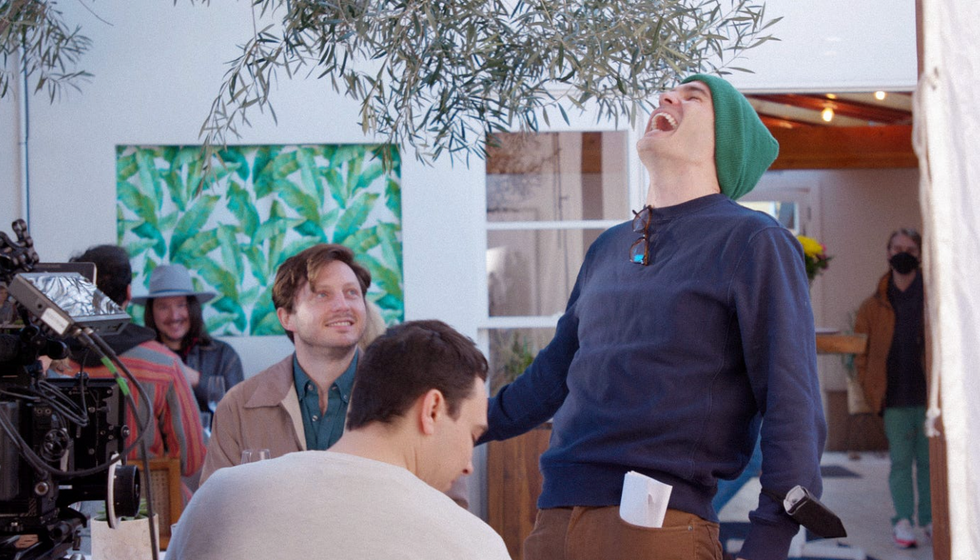
Let’s Shoot This Thing
We’re on set. Everyone made it on time, load-in was straightforward, and we’ve all COVID tested negative. It’s time to roll camera, but, of course, the dolly isn’t cooperating.
The grip and electric team have spent 30 minutes trying to get the wheels to rest on the carefully laid track, but no one can get them oriented in the right direction. It doesn’t seem to be user error, so Jim and I huddle up with Mac.
Acting as the 1st AD, I press, “How long is this going to take?”
Mac assures me, “Shouldn’t be long. We’ve almost got it.”
Jim jumps in, “What’s wrong with it?”
“The wheels just aren’t—it doesn’t really make sense—”
I cut Mac off, “Okay, so what’s the solution?”
Mac admits, “What we really need is the dolly skates, that would fix everything. But just, just give us a minute with this—”
“Nope!” I cut him off again, “Let’s move on to the next shot, we’ll come back to this.”
I say this with confidence, because I’m holding a shot-by-shot schedule—a constant reminder that the minutes at the start of the day are just as important as the minutes at the end of the day. Though, admittedly, I’ve had mixed-success in convincing people of this.
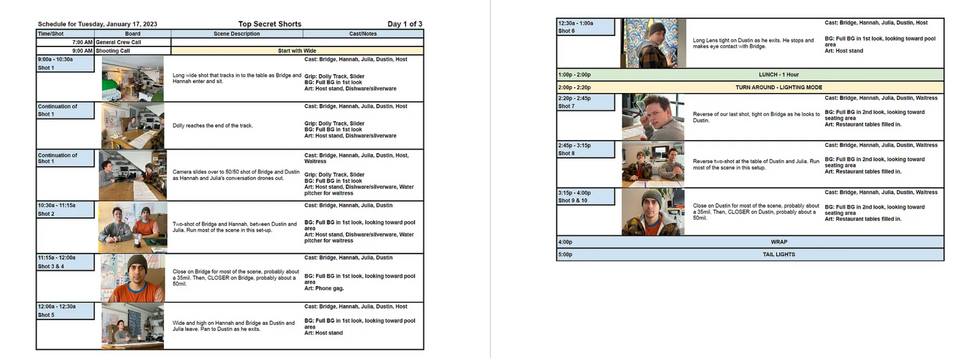
We send Jon (one of our world-class PAs) to J. L. Fisher for the skates. Sending him from Venice Beach to Burbank at rush hour on a Tuesday is less than ideal — especially because he’s one of only two PAs—but we need the skates. We get Bridge and Taylor’s coverage at the table while Jon’s on the run, but he’s back quicker than we expected, and we return to the wide opening shot.
The opening oner has gotten a lot of attention, mostly because it’s Jim’s signature style. I want to highlight the numerous background actors in the shot, skillfully placed and cued by our brilliant 2nd AD, Jono. The background actors are all friends who have volunteered their day generously and without ever once complaining (at least as far as I know), just for the promise of lunch and free parking. You need people like that, and it’s important to return the favor when they come asking for your help in the future.
Though lunch was promised, it’s getting close to 1:00 P.M. and the caterer isn’t here yet. They haven’t gotten in touch with me, and Dustin is pre-occupied with, y’know, acting in the scene, so I’m trying to call them between takes. People are getting hungry, and we’re rapidly approaching the dreaded meal penalty, which I absolutely hate to take.
Mercifully, the caterer arrives and Sawyer, our other godsend of a PA, helps them get set up in record time. We call lunch within the grace period and avoid meal penalties altogether. Phew.
On the turnaround after lunch, we get to the bit where Dustin is holding the phone up with the… let’s say adult content. There was extensive conversation during our pre-pro meetings with Mac, Charlie, and Gabe about how we were going to pull this off.
We decide it doesn’t make much sense to have him actually playing videos on his phone, because it would be a major pain to sync up the video with his performance—not to mention that exposing the background actors to that much gratuitous imagery would be unsophisticated (and maybe… like, illegal?).
With that in mind, we opt for a green screen on Dustin’s phone. We’re in our groove after lunch, and we breeze through Dustin and Julia’s coverage.
Moving in for Dustin’s close-up, which is really the meat and potatoes of the short, we do two, maybe three takes all the way through before Jim says, “Alright, we got it.”
Dustin waves for me to come over, “Hey, Thomas. Do you think that was enough?”
I hesitate, “You know, if I were directing I might get a couple more…”
Dustin agrees. He tells me to take it up with the boss, so I do.
“Jim, we’ve got time, we could get a few more of Dustin’s performance if you want — ”
“No,” Jim insists, “No need. I’ve got what I’m gonna use.” And so he did.
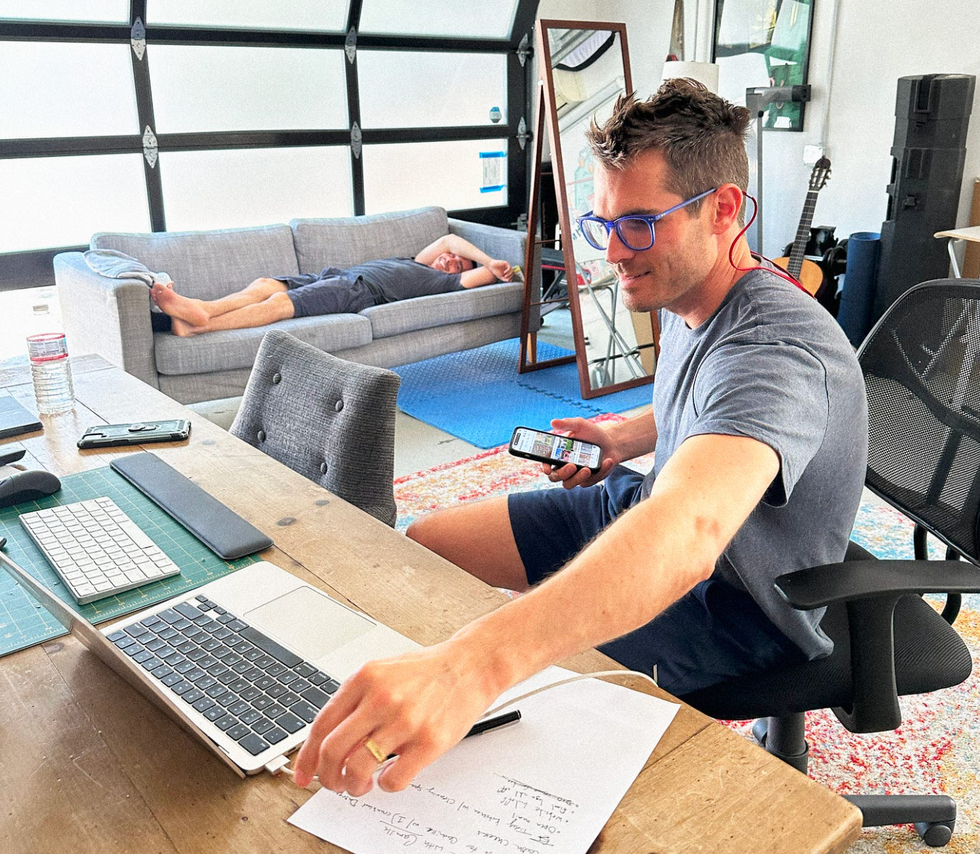
The Cutting Room Floor
It’s a couple weeks before Jim has a cut ready for me and Dustin to watch. He’s had the assembly more or less where he wants it since the week we shot, but Jim can’t help but tinker endlessly on the fine details.
He’s taken it upon himself to source the couple who will be on Jameson’s phone, “She really looks like she could be Dustin’s sister, huh?”
I agree, nervous as I realize that at some point I’ll have to show this short to my parents. “How the hell did you find these people?” I ask Jim, incredulous.
“I found her online, and then hit her up on Instagram. She had seen the Thunder Road short and said she was a fan, so I just paid them a few hundred bucks and had ChatGPT draft up a release so we could use their videos.” Jim explains, reminding me that he is truly a genius.
* * *
It’s months later, and Jim is still working on the extremely minute details day and night. He sends me screenshots every so often with relatively esoteric questions that far exceed my color correction expertise: “I think too saturated, too muddy in the whites?”
I defer to his judgment and reiterate that I thought he was done a long time ago. I ask if he ever wants to, y’know, finish the thing.
“Thomas. It has to be really, really good.” He explains again.
“Fair enough,” I say, “I’ll leave you to it.”
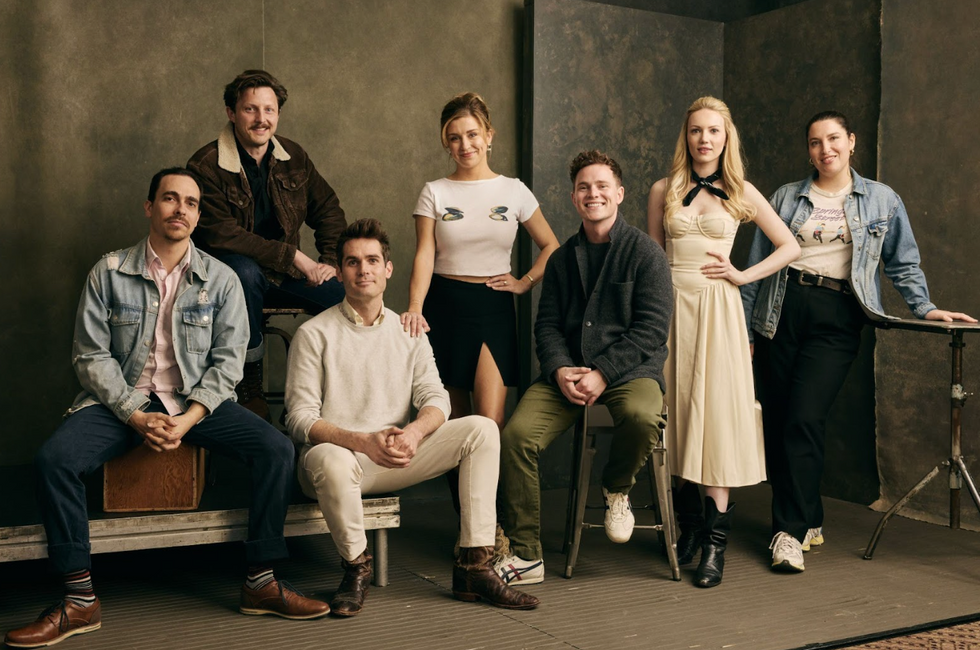
Showtime
Jim eventually does abandon the movie, as Fincher would put it.
The short is selected to World Premiere at SXSW 2024, and plays to sold-out crowds. At the first screening, I’m crying-laughing before the first joke even lands, because I can’t believe what we’re about to show these unsuspecting people.
The adult images end up being far less obscene than I feared when I first read Jim and Dustin’s script, which is a huge relief to me. The audiences at our screenings seem offended, but not outraged. I think something very special came from Jim spending all those extra hours meticulously working on the cut, to his credit.
The week after SXSW, we release the short to the public as a Vimeo Staff pick — a dream come true for me and the rest of the team, I’m sure.
You can watch it here, just, maybe not while you’re at work.
- How This Short Film Uses Low-Budget VFX and Sound Design to Dive into the Technocracy ›
- The Power of the Ask—And Other Things I Learned Making My First Sci-Fi Telenovela ›
- Jim Cummings Releases SXSW Short Film ‘The Last Brunch’ Online for Free ›
- Jim Cummings Showcases a Free Film School | No Film School ›
- This is What Really Happens While Filming Movie Sex Scenes | No Film School ›
- Watch Jim Cummings Parody Marvel With Exquisite Cringe | No Film School ›











